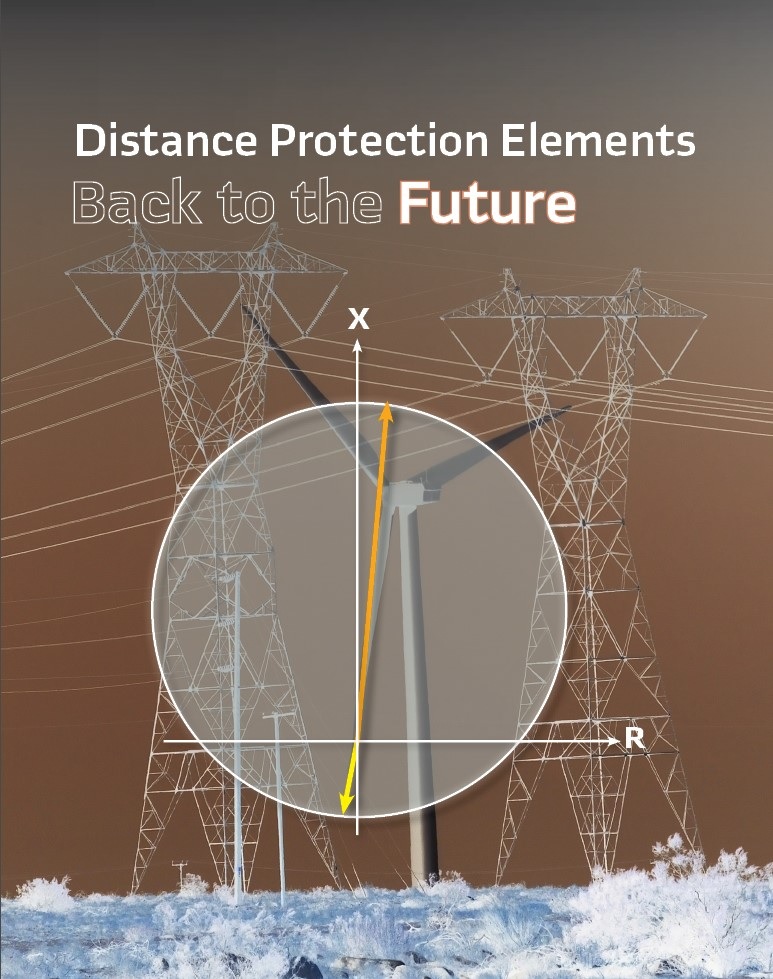Angle of distance elements in applications to IBR/Wind dominated grid
Bogdan Kasztenny, Power System Protection Engineer at Schweitzer Engineering Laboratories speaks on Distance protection elements for applications near unconventional sources.

Distance protection has been a valuable tool in our toolbox for over 70 years. It provides fast channel-independent tripping for a portion of the protected line (Zone 1), it detects faults for the entire line in pilot protection schemes (Zone 2), and it provides step distance backup protection for the line and surrounding system. In line protection, distance elements are our go-to solution. Wind-powered generators and inverter-based sources considerably change the fault current characteristics in the electric grid. These sources challenge several protection fundamentals that used to serve us well in the days of large synchronous generators. Our industry seems to insist on keeping present distance protection designs and looks for a patch, a tweak, or an add-on that would make the present designs work. We struggle to find and justify those patches because of the complexity of the problem, the lack of a universal fault response from unconventional sources, and proprietary relay designs. Even when we find and apply tweaks, we slide back into using simulations to prove protection schemes and their settings on a project-by-project basis. This talk shows that a solution lies in the direction opposite of the reflex to add a fix based on the details of the problem. Instead of adding more logic based on the exact nature of the problem, we simplify the present design and make it work under worst-case assumptions. Working with worst-case assumptions about the problem frees us from having to know the exact source characteristics and from insisting on a universal fault response from the sources. When pursuing this path, we will rediscover some older distance protection concepts and approaches that our industry has forgotten about.
Date and Time
Location
Hosts
Registration
-
 Add Event to Calendar
Add Event to Calendar
Loading virtual attendance info...
- Contact Event Hosts
-
Mike Brisbois
708.668.5488
mike.brisbois@ieee.org - Co-sponsored by IEEE Power and Energy Socieity
Speakers
 Bogdan Kasztenny of Schweitzer Engineering Laboratories (SEL)
Bogdan Kasztenny of Schweitzer Engineering Laboratories (SEL)
Distance Protection
Distance protection has been a valuable tool in our toolbox for over 70 years. It provides fast channel-independent tripping for a portion of the protected line (Zone 1), it detects faults for the entire line in pilot protection schemes (Zone 2), and it provides step distance backup protection for the line and surrounding system. In line protection, distance elements are our go-to solution. Wind-powered generators and inverter-based sources considerably change the fault current characteristics in the electric grid. These sources challenge several protection fundamentals that used to serve us well in the days of large synchronous generators. Our industry seems to insist on keeping present distance protection designs and looks for a patch, a tweak, or an add-on that would make the present designs work. We struggle to find and justify those patches because of the complexity of the problem, the lack of a universal fault response from unconventional sources, and proprietary relay designs. Even when we find and apply tweaks, we slide back into using simulations to prove protection schemes and their settings on a project-by-project basis. This talk shows that a solution lies in the direction opposite of the reflex to add a fix based on the details of the problem. Instead of adding more logic based on the exact nature of the problem, we simplify the present design and make it work under worst-case assumptions. Working with worst-case assumptions about the problem frees us from having to know the exact source characteristics and from insisting on a universal fault response from the sources. When pursuing this path, we will rediscover some older distance protection concepts and approaches that our industry has forgotten about.
Biography:
Bogdan Kasztenny has over 30 years of experience in power system protection and control. In the 1990s, during his decade-long academic career, Dr. Kasztenny taught power system and digital signal processing courses at several universities and conducted applied research for several relay manufacturers. In 1999, Bogdan left academia for relay manufacturers where he has since designed, applied, and supported protection, control, and fault-locating products with their global installed base counted in thousands of installations. Bogdan is an IEEE Fellow, a Senior Fulbright Fellow, a Distinguished CIGRE Member, an Associate Editor for IEEE Transactions on Power Delivery, and a registered professional engineer in the province of Ontario. Bogdan earned both the Ph.D. (1992) and D.Sc. (Dr. habil., 2019) degrees, has authored over 220 technical papers, and holds over 60 U.S. patents.
Email:
Agenda
4:00 pm IEEE Announcements
4:02 pm Introduction of Speaker
4:04 pm Presentation
4:50 pm Q&A
How to connect to the grid/power transmissions lines without disturbing or faulting the line? Find out today from Bogdan Kasztenny, SEL protection engineer on how we are addressing these new anomolies. FLYER Sign up today! REGISTER

